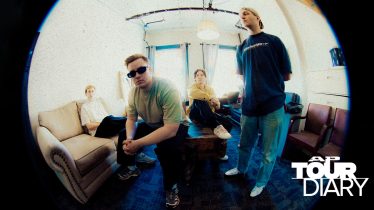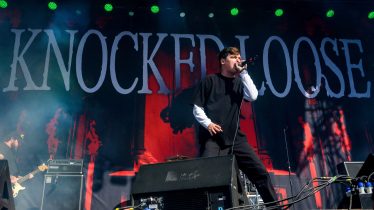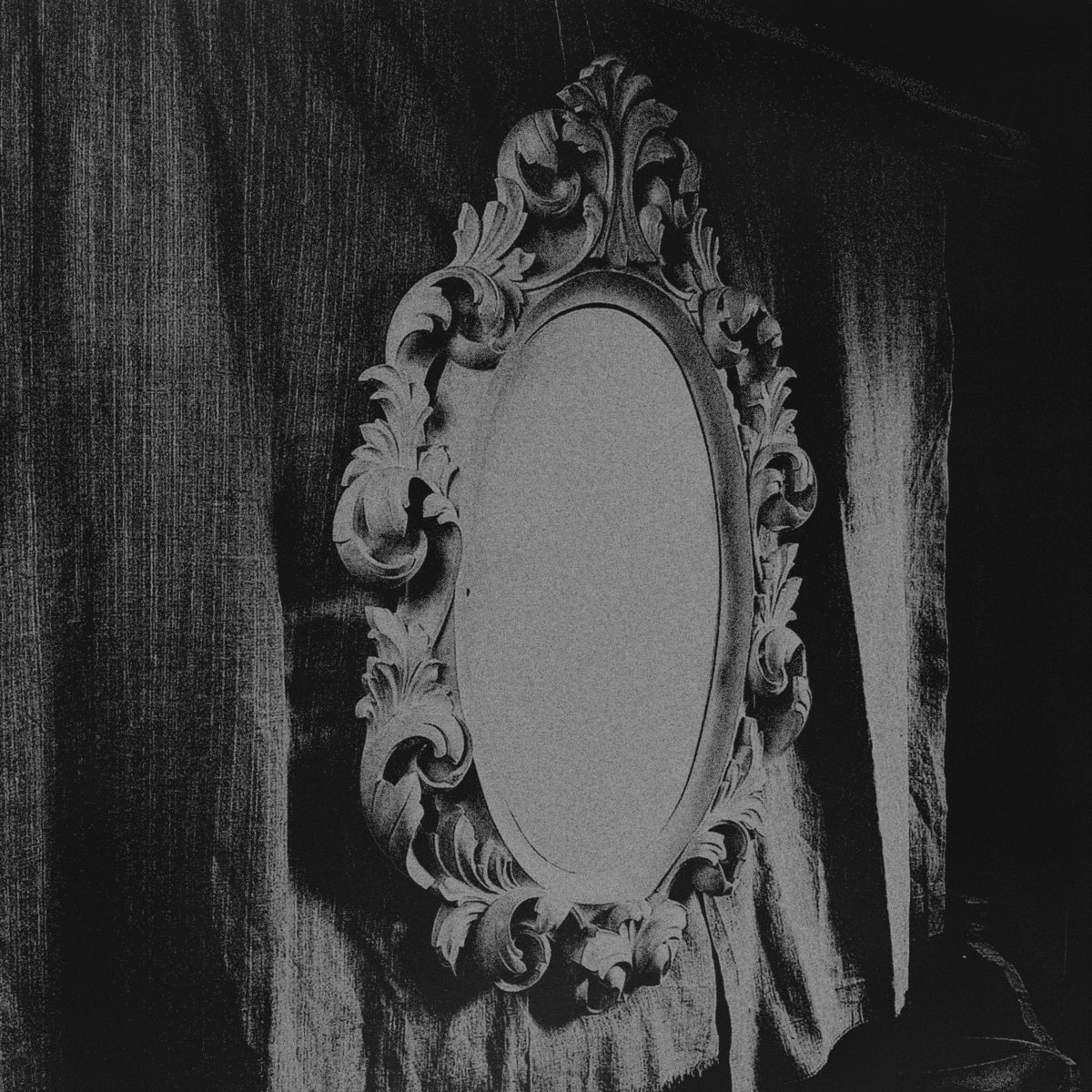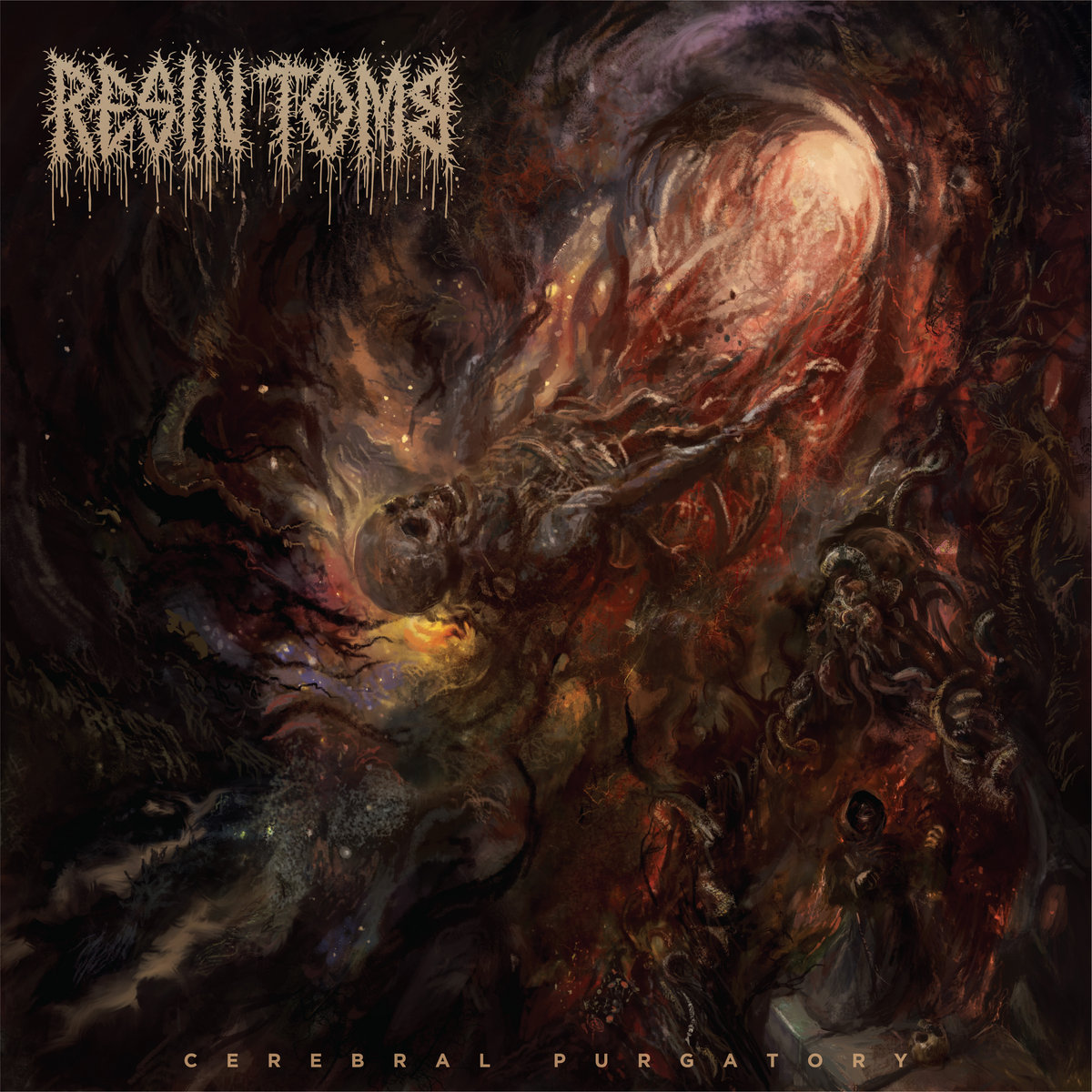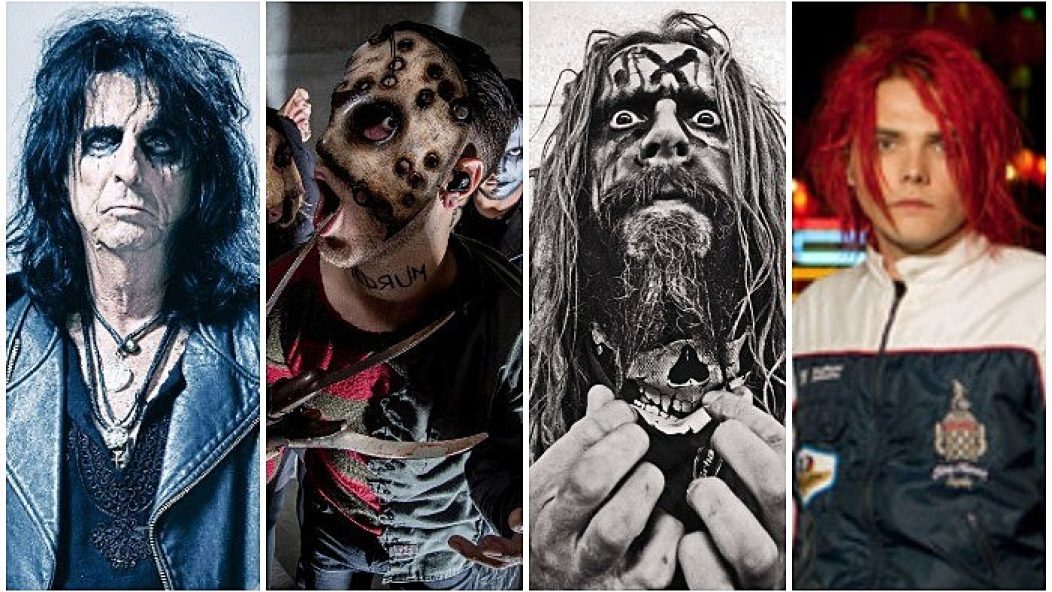
19 songs influenced by horror movies not written by the Misfits
Beginning with their 1979 single “Night Of The Living Dead,” the Misfits have made a career of mining classic, cult and B-grade movies for fodder for their hard-driving, melodic brand of patented horror punk. With results ranging from the sublime fury of the classic Glenn Danzig-fronted lineup’s “Astro Zombies” to the unabashedly ridiculous “The Devil’s Rain” of the post-Michale Graves, Jerry Only and Friends era, no band have incorporated direct callbacks to horror cinema better, or on occasion worse, than Lodi, New Jersey’s homegrown ghouls.
However, Mr. Danzig and company are far from the only or the first extreme act to incorporate horror movie themes into their music. Hold onto your hearses because we’re exhuming 20 hellish horror movie-inspired hits that are not from the Misfits.
Read more: This new ‘Hocus Pocus’ mug comes with its own broomstick spoon
Blue Öyster Cult – “Godzilla”
Featuring a thundering riff worthy of Japan’s favorite kaiju export, Blue Öyster Cult’s 1977 hit “Godzilla” has become a staple of classic-rock radio as well as one of the venerable band’s signature songs. Featured on their 1977 album Spectres, BÖC’s ode to the atomic-powered, city-stomping lizard has since been covered by artists such as System Of A Down’s Serj Tankian and stoner-rock favorites Fu Manchu, proving again and again that you can’t keep a good monster down.
Necrophagia – “And You Will Live In Terror”
Founded by the late Frank “Killjoy” Pucci, death-metal pioneers Necrophagia began using horror film elements from their inception on songs such as the Evil Dead-inspired “Ancient Slumber” from their 1987 debut, Season Of The Dead. Killjoy, a lifelong devotee of filmmaker Lucio Fulci, pays tribute to the Italian horror master’s most celebrated film The Beyond with “And You Will Live In Terror” from theirs 2000 EP, Black Blood Vomitorium. Featuring Pantera’s Phil Anselmo (credited as Anton Crowley on guitar) and lyrics as brutal as Fulci’s gore-strewn, apocalyptic imagery, “And You Will Live In Terror” is Necrophagia at their breakneck best.
Ice Nine Kills – “Love Bites”
If any band can give the Misfits a run for their money when it comes to incorporating classic horror films into their music, it’s Ice Nine Kills. One of their best is a drastic departure from their usual metalcore sound, the midtempo ballad “Love Bites,” based on John Landis’ 1981 horror classic An American Werewolf In London. Sung from the perspective of the film’s doomed protagonist David Kessler, who knows love can’t survive his lycanthropic curse, “Love Bites,” like the film it’s centered on, teeters on the edge of camp but is just restrained enough to give the heartstrings an irony-free tug.
The Cramps – “I Was A Teenage Werewolf”
Based on the 1957 drive-in cult classic of the same name, “I Was A Teenage Werewolf” is the fourth track from psychobilly punk demigods the Cramps’ near-perfect 1980 debut album, Songs The Lord Taught Us. Conjuring images of lonely lover’s lanes and moonlit madness, Poison Ivy’s reverb-drenched guitar lines weave seductively around frontman Lux Interior’s increasingly unhinged vocals on this lament to adolescent lycanthropy. With tongue (and fangs) planted firmly in cheek, Interior’s sardonic lyrics perfectly capture the monstrosity and awkwardness of teenage life, which is hard enough without the added embarrassment of being a werewolf.
Pentagram – “Sign Of The Wolf (Pentagram)”
Underground doom-metal trailblazers Pentagram take a grimmer view of lycanthropy on “Sign Of The Wolf (Pentagram)” from their 1985 debut, Relentless. A driving, uptempo song in the mode of Black Sabbath’s “Paranoid,” “Sign Of The Wolf” draws its imagery from the 1941 Universal classic The Wolf Man. A riff-laden metal masterpiece, “Sign Of The Wolf” conjures the plight of the film’s cursed protagonist Larry Talbot (Lon Chaney Jr.) and the fearsome sign that marks his victims. The tragedy of Talbot’s curse and his impending fate are driven home as singer Bobby Liebling intones, “Shotgun blasts as he runs with the wind/But he just can’t win/It’s the Pentagram.” A hard-hitting track thick with a classic monster movie vibe, “Sign Of The Wolf” deserves a hallowed place on every horror and metal fan’s playlist.
Dokken – “Dream Warriors”
Often miscategorized as “hair metal,” Dokken were one of the more musically viable bands to come out of the post-Van Halen hard-rock scene. In 1987, the L.A. rockers fronted by singer Don Dokken entered the nightmare world of dream demon Freddy Krueger with “Dream Warriors.” Appearing on the soundtrack for A Nightmare On Elm Street 3: Dream Warriors as well as their 1987 album, Back For The Attack, the song subtly captures the spirit of the film’s doomed heroes without becoming too literal or lapsing into silliness. Beginning with a moody, arpeggiated chord sequence, “Dream Warriors” builds to a crescendo of pop-metal triumph through Dokken’s vocal acrobatics and ax-slinger George Lynch’s herculean soloing. The perfect companion to a perfect 1980s slasher, “Dream Warriors” defines a special moment in a beloved franchise.
Blitzkid – “Myers 10/31”
Of the countless horror-punk bands clamoring for the title of heir apparent to the Misfits in the 2000s, there’s little argument that Blitzkid were the prime contenders for the crown. Like their devil-locked mentors from New Jersey, singer T.B. Monstrosity and bassist Argyle Goolsby often turned to horror cinema for inspiration with their 2001 album, Let Flowers Die, being among their most fright film-oriented releases. On a record that includes tributes to The Fog, Hellraiser, Candyman and Nosferatu, “Myers 10/31,” Blitzkid’s paean to the Halloween franchise’s babysitter-stalking boogeyman is a standout. Placing the listener behind Michael Myers’ mask, Blitzkid slash their way through the four-minute tribute to director John Carpenter’s most notorious creation. The sonic equivalent of an apple with a razor blade hidden in it, “Myers 10/31” is a Halloween treat worthy of its legendary source material.
Lȧȧz Rockit – “Leatherface”
Hailing from the same Bay Area scene that was the proving ground for Metallica, Exodus and Death Angel, Lȧȧz Rockit just never managed to get the fame of their thrash-metal brethren. Nevertheless, the band will be forever remembered by horror fans for their 1989 single, “Leatherface.” Featured on the soundtrack for the criminally underrated Leatherface: The Texas Chainsaw Massacre III, the song is relatively standard thrash notable only for its infamous, power tool-wielding namesake. Despite its metal by-the-numbers composition and uninspired lyrics, “Leatherface” possesses a nostalgic charm that makes it a perennial favorite for fans of the Texas Chainsaw films.
Alice Cooper – “He’s Back (The Man Behind The Mask)”
Missing in action since 1983’s DaDa, a sober Alice Cooper made a triumphant return with his comeback album, Constrictor, in 1986. Constrictor’s first single “He’s Back (The Man Behind The Mask),” a slick piece of polished pop-metal that characterized Cooper’s sound throughout the late 1980s, is an ode to none other than Friday The 13th’s Jason Voorhees. Featured on the soundtrack for Friday The 13th Part VI: Jason Lives, one of the franchise’s more imaginative and fantasy-oriented outings, “He’s Back” is far from Cooper’s best but, in the context of the film and the era, has a goofy charm that somehow works.
Wednesday 13 – “I Walked With A Zombie”
Taking its title from Jacques Tourneur’s atmospheric 1943 horror film, “I Walked With A Zombie” from Wednesday 13 is a fist-pumping, necrophiliac horror-punk anthem sure to get even the most decrepit corpse’s blood flowing. The third track from the Murderdolls frontman’s 2005 solo debut, Transylvania 90210: Songs Of Death, Dying, And The Dead, “I Walked With A Zombie” takes Tthe Misfits’ tried-and-true horror-punk formula and fuses it with the glam-rock swagger of the New York Dolls. An upbeat departure from his work with the Muderdolls, Wednesday 13’s gravelly vocals and spookshow lyrics make this song a graveyard bash.
My Chemical Romance – “Early Sunsets Over Monroeville”
Leave it to Gerard Way to write a love song about George A. Romero’s 1978 zombie opus Dawn Of The Dead. Featured on their debut album, I Brought You My Bullets, You Brought Me Your Love, “Early Sunsets Over Monroeville” seems at first to be a moment of calm on an otherwise raucous release but soon morphs into something very different, thanks to Way’s intense vocal delivery. A jangly ballad about lovers on the run during a zombie plague, the Monroeville of the title is Monroeville, Pennsylvania, home to Dawn Of The Dead’s infamous shopping mall from which the song draws much of its imagery. Way even pays homage to Dawn Of The Dead’s often quoted “no more room in hell” tagline in the chorus. Both melancholy and intense, the My Chemical Romance track is an oddly touching ballad that’s just as effective even if you don’t get all (or any) of the nods to Romero’s film.
45 Grave – “Partytime (Zombie Version)”
“Partytime” by original death-rockers 45 Grave first appeared on the band’s 1983 debut album, Sleep In Safety. The deceptively upbeat song is a scathing indictment of child abuse and murder based on a true incident vocalist Dinah Cancer had read about in a true-crime magazine. Revised again with lyrics reflecting the plot of the film. “Partytime” was included on the soundtrack of the 1985 film The Return Of The Living Dead. Thanks to the movie’s immediate popularity with horror fans, this rendition, titled “Partytime (Zombie Version), became the band’s most popular and recognized song. Although it lacks the original’s lyrical gut punch, “Partytime (Zombie Version)” is nevertheless a perfect encapsulation of The Return Of The Living Dead’s blackly comedic tone.
Death – “Evil Dead”
Influential innovators Death fronted by the late metal mastermind Chuck Schuldiner practically invented the genre of death metal with their first album, Scream Bloody Gore. A highlight among highlights is “Evil Dead,” an earsplitting homage to Sam Raimi’s 1981 film of the same name. Stripped down and relentless, “Evil Dead” conjures the grueling terror of the deadites with aggression and demonic fury. Schuldiner’s screaming vocals and intense, verging-on-thrash guitar work are raw and relentless on this literal piece of metal history. Avoid playing this one in secluded backwoods cabins.
Rob Zombie – “Living Dead Girl”
French filmmaker Jean Rollin’s 1982 film La Morte Vivante, best known by its alternate title The Living Dead Girl, is the bloody, sensual story of woman who discovers her missing best friend has become a vampire. Rob Zombie’s “Living Dead Girl” from his smash 1998 solo debut, Hellbilly Deluxe, is about, well, we’re really not sure. With lyrics that are both nonsensical and grimly evocative (“Cyclone Jack, hallucinating hack/Thinks that Donna Reed eats dollar bills”), Zombie manages to allude to just about every horror and exploitation movie ever made except Living Dead into the song. Featuring samples from Wes Craven’s Last House On The Left, the 1971 Belgian horror film Daughters Of Darkness and the Italian shocker Lady Frankenstein, as well as lyrical callouts to the grindhouse favorite Ilsa: She-Wolf Of The SS and the Vincent Price’s James Bond-inspired Dr. Goldfoot comedies, it’s a stream of consciousness funhouse and one of Zombie’s best.
Calabrese – “New York Ripper”
Lucio Fulci’s 1982 slasher film New York Ripper is one of the sleaziest and most disgusting films you’re ever likely to see. The very film stock seems to ooze with filth. Yet, in its own weird way, it’s one of Fulci’s most innovative horror films, which naturally made it a perfect subject for Calabrese. Musically, “New York Ripper,” from their 2015 release Lust For Sacrilege, is a bit of a departure for the band. With a slower tempo and sparser, less saturated guitars, “New York Ripper” has the feel of classic-era Danzig. Abandoning their usual B-grade monster movie imagery for the cracked perspective of a megalomaniacal serial killer, Calabrese skirt the edges of real violence and horror on this track but never quite veer as far into thematic darkness as Danzig’s post-Misfits band Samhain.
Orange Goblin – “The Fog”
A lonely foghorn and a peal of thunder usher in a thick, fuzzed-out wall of guitars in the opening bars of Orange Goblin’s doom-laden homage to John Carpenter’s 1980 supernatural thriller The Fog. A dynamic aural assault, “The Fog,” from A Eulogy For The Damned, evokes the film’s creeping mood of dread and chaos as the band effortlessly transition from droning riffs to full-on metal madness. With lyrics that echo the film’s plot of a doomed ship of lepers’ ghostly revenge on a seaside community, “The Fog,” in all its doom-metal glory, does a better job of capturing the spirit of Carpenter’s eerie, underappreciated classic than the dreadfully uninspired 2005 remake.
New York Dolls – “Frankenstein”
In their original and best incarnation, influential proto-punkers New York Dolls released two perfect albums of down-and-dirty rock ’n’ roll that laid the groundwork for a musical revolution. “Frankenstein,” from their self-titled 1973 debut, is a deceptively brilliant song. Rather than recount the plot of the iconic 1931 Universal film, the Dolls use Boris Karloff’s sympathetic portrayal of Mary Shelley’s man-made monster as a symbol to express both a challenge and an appeal to the mainstream from the underground. Drawing parallels between New York’s underground art and music scene and an unsympathetic but curious mainstream, singer David Johansen deftly uses the creature as metaphor to touch on everything from the politics of interpersonal relationships and class consciousness to fashion. An anthem for adolescent angst, New York Dolls’ “Frankenstein” will be relevant for as long as there are social misfits.
Iron Maiden – “The Wicker Man”
Iron Maiden came storming back to the forefront of metal with their 2000 album, Brave New World. Marking the return of classic-era singer and fan-favorite Bruce Dickinson, “The Wicker Man takes its title from Robin Hardy’s 1973 folk-horror magnum opus of the same name. A classic Maiden track, “The Wicker Man” stands alongside “The Trooper” and “The Number of Beast” for pure headbanging intensity. A triumphant shout for the old gods, “The Wicker Man” takes the film’s premise and expands it to universal proportions with the whole of modern society consumed by cleansing pagan fire.
The Ramones – “Pet Sematary”
It will come as no surprise to fans of old-school punk that the legendary Ramones, particularly guitarist Johnny Ramone, were huge horror movie fans. There are references to everything from Tod Browning’s Freaks, from which the band derived much of their imagery as well the iconic “Gabba Gabba, we accept you. . .” chant from the song “Pinhead” to The Texas Chainsaw Massacre nods abound in their music. Co-written by bassist Dee Dee Ramone and producer Daniel Ray, the song was created for the 1989 film adaptation of Stephen King’s novel of the same name. The punk-rock godfather’s inclusion on the soundtrack was no accident. King, a self-confessed rabid Ramones fan, quotes the band’s “Blitzkrieg Bop” and its refrain of “Hey! Ho! Let’s Go!” throughout the book. A bright spot on a lackluster album, “Pet Sematary” may have been as close as the Ramones ever got to a mainstream hit. A fan favorite, the song was a staple of the Ramones’ live shows until their 1996 retirement.

